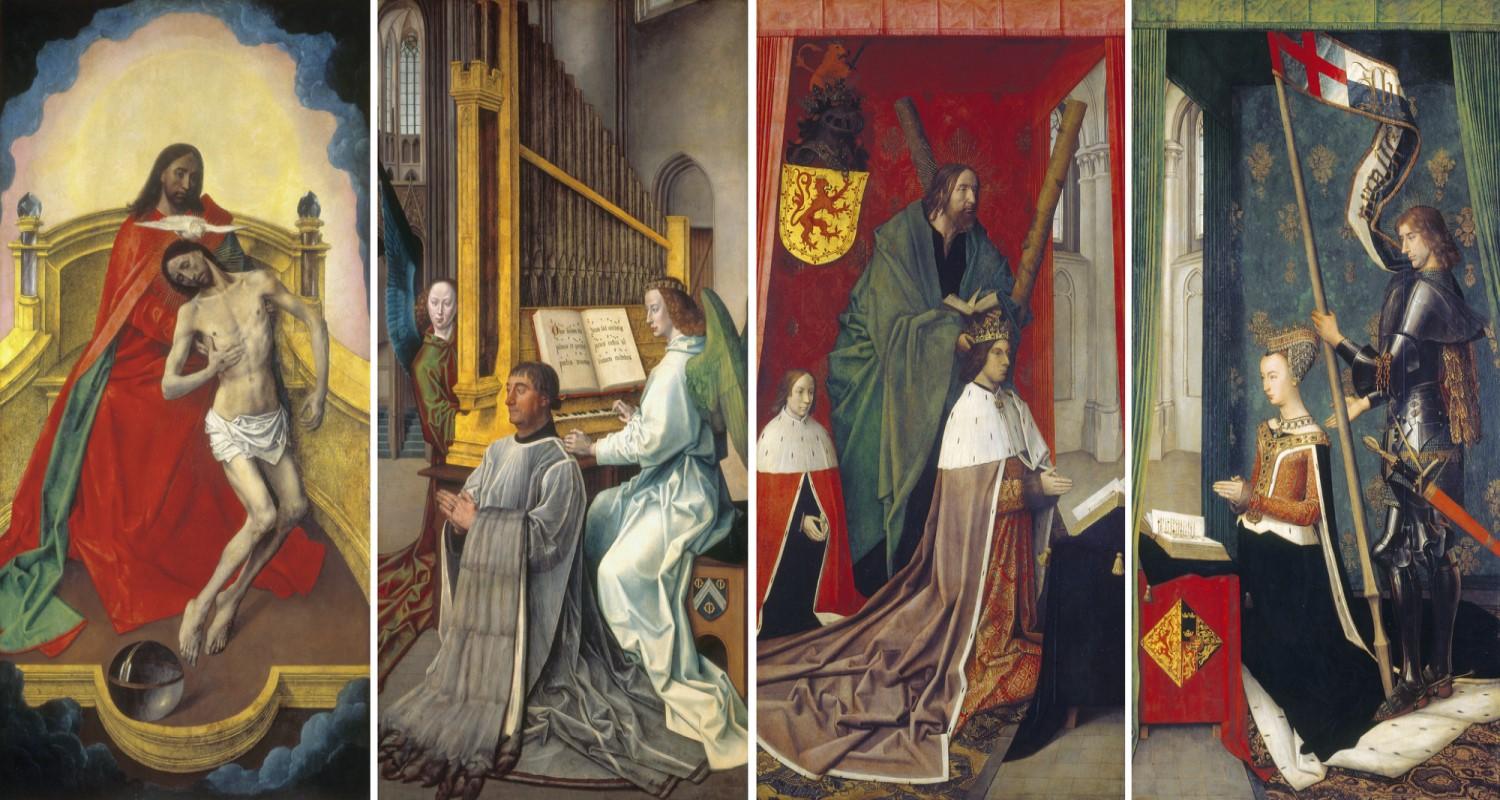Sir Edward Bonkil was the first provost of the Trinity Collegiate Church. He commissioned the most prestigious artwork in Scotland for the church from a renowned Flemish artist in 1476. The altarpiece now has a prominent place in the National Gallery of Scotland. Bonkil came from an ambitious family of merchants trading between Bruges and Edinburgh who owned property in both cities. This talk looks at the status of merchants in Edinburgh, how Bonkil’s family connections enabled him to commission the work and the importance of the altarpiece to Edinburgh, then and now.
Jill Harrison, lecturer in Art History and Research Associate, Open University, founded the Trinity Network in 2018 with the aim of studying all aspects of the Trinity Apse in Edinburgh now located on Chalmers Close. In order to secure an appropriate future for this iconic building, they have forged connections with a number of Edinburgh stakeholders: Morningside Heritage Association, Old Edinburgh Club, Edinburgh Museums and Galleries, Dorothy Dunnett Society, Friends of Calton Hill, the Crannie Community Hub, Historic Environment Scotland, Grassmarket Residents Association, the Cockburn Society, Heriot Watt University and Edinburgh University. They have mounted lectures and Open Days in the Apse, and are currently editing a book on the Trinity Apse to be published in 2025. Jill Harrison is the recipient of an OEC Jean Guild Award for a 2- year project to produce a survey of all the Trinity stones dispersed over Edinburgh following the demolition of the building in 1848.
Edinburgh is 900 Years Old!
In 1124 King David I introduced a new system of local government into Scotland by creating royal burghs as part of his efforts to reform the nation’s economic and political structures.
Edinburgh was one of his first royal burghs, along with Berwick, Dunfermline, Roxburgh and Stirling.
While there is no surviving founding Edinburgh charter, an 1127 Dunfermline Abbey royal charter refers to ‘my burgh of Edinburgh’. In 1128, Canongate Burgh was created for Holyrood Abbey.
After the Reformation, Edinburgh spent considerable effort acquiring the former abbey’s lands over the following 200 years. It acquired Canongate then created a new burgh for South Leith in 1636. The burghs of Broughton, Calton and Portsburgh were also acquired and run by Edinburgh. This complex system of governance was abolished in 1856 when all burghs under the management of Edinburgh were merged into a single burgh.
In 1833, Portobello and Leith were made independent parliamentary burghs under the Burgh Reform Act. They ran their own affairs until amalgamated into an expanded Edinburgh in 1896 and 1920, respectively. 1975 saw the last expansion of the city’s boundaries, including Queensferry, which had been made a royal burgh in 1636.
Edinburgh has selected 2024 to mark the start of the 900th anniversary of our city, and to tell the story of Edinburgh’s journey through the centuries from the 12th century City of David right up to the 21st century, the City of Diversity. Our talks at the City Art Centre will celebrate the 10 themes and will span a period of summer 2024 until August 2025.
Edward Bonkil and the Trinity Altarpiece: Art and Ambition in a fifteenth Century Edinburgh Merchant Family
